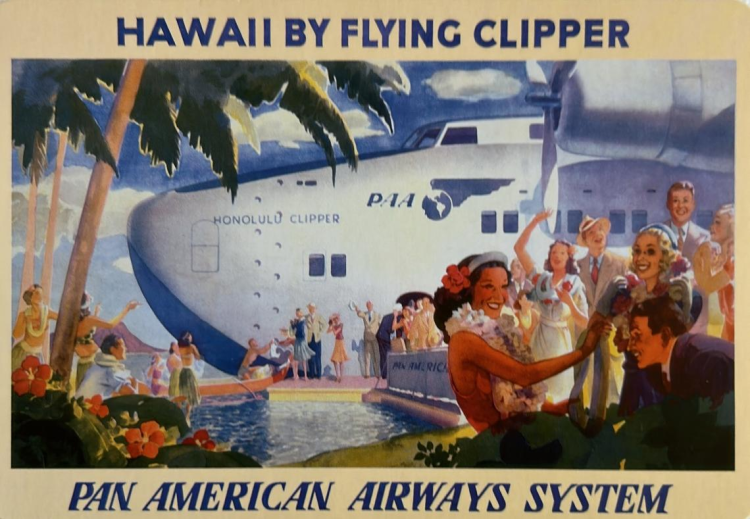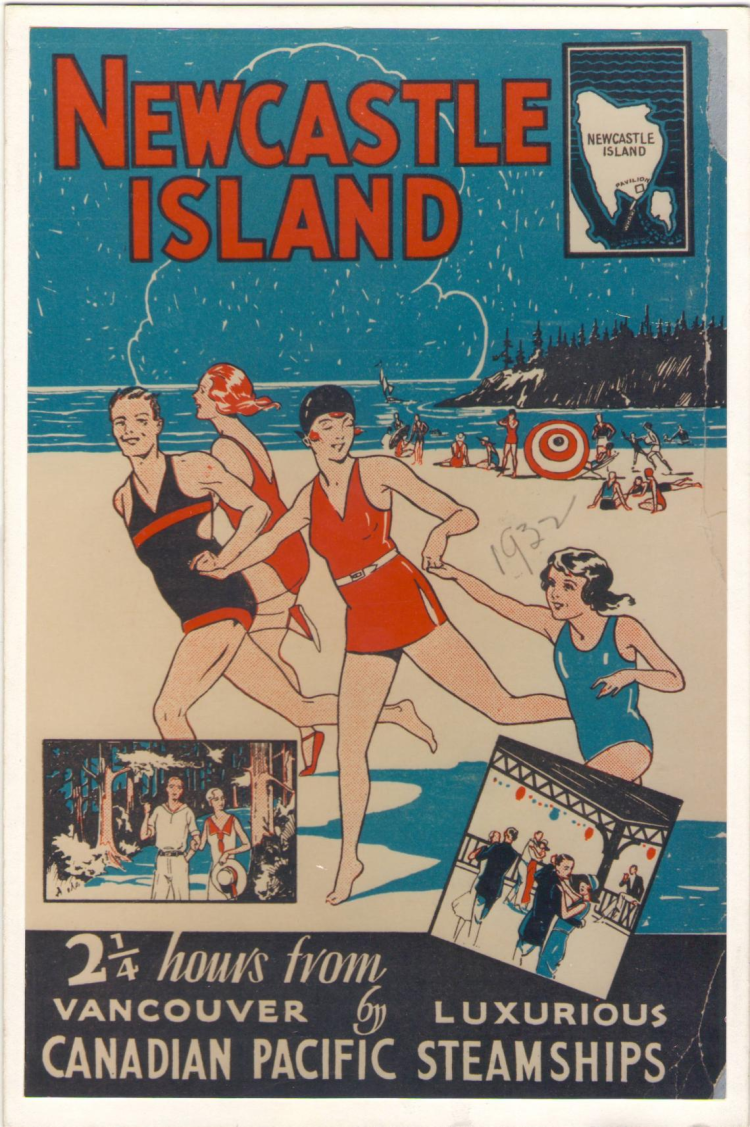Dr. Cheryl Krasnick Warsh, a Vancouver Island University History Professor, is examining the iconography of travel destinations in transportation advertising from the 19th to the 21st centuries.

It all started in Hawaii when she picked up retro-travel postcards and noted the tension of the image.
"I was at a conference in Hawaii and picked up some retro travel postcards, including one for Canadian Pacific Air Lines, and was intrigued by the visual tension. The happy beachgoers and hula dancers in the foreground, and the airplane moving into the shot from the northwest," said Warsh. "Given the history of European and American imperialist incursions into the Pacific islands from the west and the Japanese incursions from the east, culminating in the air attack on Pearl Harbor, it is not hard to experience a sense of foreboding."

Warsh said the images also reminded her of Leo Marx's classic cultural history, The Machine in the Garden, where he examines 19th-century literature and art relating to the sudden end of pastoralism and the rural way of life with the arrival of the railroad.
"Much of the art he referenced had a similar composition to the travel art I found," she said.
Warsh contextualizes the iconography of travel posters from several Canadian tourist destinations, as well as Hawaii, within the political and social history of their associated advances in transportation in her research paper.
"It is not that the advancements in transportation in the 19th and 20th centuries opened up' areas for mass tourism (as they had for mass immigration); it is that in many instances, the destinations were the profit centres for the transportation entrepreneurs," explained Warsh. "There were great risks and great financial, political and human costs associated with the building of railroads, canals, steamships and airplanes. The tourism industry was part of the prize."
Warsh explains her research below.
Tell us about your research.
I compare and analyze a variety of Canadian tourist destinations from the 19th to the 21st century and contextualize them within the innovations in transportation that facilitated their popularity. I frame the paper as a travel excursion that jumps through time as it moves from eastern to western Canada, and then beyond the Pacific coast.
We begin in the 1820s in New York State. In the early 19th-century North American context, tourism through the northeastern states, Upper Canada and Lower Canada, was known as the Northern Tour. The Erie Canal, constructed in the 1820s and '30s, linked the port of New York with the western continent and had its terminus at Niagara Falls. This region experienced economic, religious and social upheavals including being the birthplace of multiple evangelical religions, temperance and abolitionism, ultimately leading to the American Civil War. These upheavals began within a few miles of the route of the Erie Canal.
A century later, we travel up Ontario's new Highway 11, also known as Ferguson's Highway after the Premier who built it to access the rich resources of northern Ontario and open up the region to population growth. While motorcars were becoming popular forms of tourist transportation in the 1920s, tourism stagnated until the second Canadian natural wonder - the Dionne Quintuplets - brought millions of Canadians and Americans, in their Model T's and Packards, to the village of Callander to gawk at the five little girls in the midst of the Great Depression.

We then head west on the Canadian Pacific Railroad to Banff, Alberta, to experience the wonder of the Canadian Rockies from the comfort of the great CPR hotel - the neo-gothic structure that functioned as both an elegant resort and de facto fortress against American incursions, and affirmation of eastern Canadian sovereignty over local First Nations.
We remain on the CPR to the company's western-most resort - the pavilion at Saysutshun (Newcastle Island), accessed by Canadian Pacific steamship. In the interwar period, Saysutshun was a popular weekend excursion for company picnics and family summer holidays before the mainland had a fully integrated highway system.
Finally, we board Canadian Pacific Air Lines to enjoy the balmy breezes of the Hawaiian isles. All these destinations had similar banners and postcards, juxtaposing the natural wonder with the transportation required to experience it.
What is the impact of this research and what does it tell us about the connection between tourism and transportation?
The research reminds us that tourism is not just about wanting to go somewhere and then just hopping on a plane or train and getting there. The innovators in the transportation industries set out in many instances to find destinations appealing to enough people to fill their seats and make their routes viable. At the same time, the transportation and tourism industries have acted as convenient, non-military ways for technologically advanced nations to spread their influence and grow their markets. This has been analyzed in many excellent studies - I connect the dots for Canadian tourist destinations that aren't immediately associated with each other. I also contextualize transportation and tourism with social changes that were accelerated by rapid growth.










